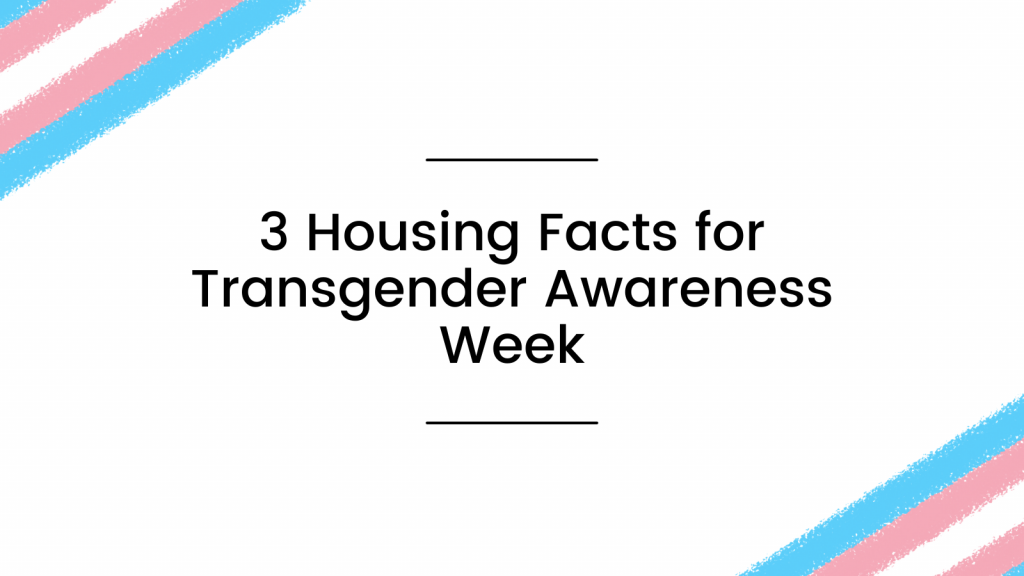3 Housing Facts for Transgender Awareness Week
November 13-19 is Transgender Awareness Week, a week for elevating transgender existence and resilience and for calling attention to the issues that transgender and gender non-conforming people face. It’s a week of education and action in the lead up to Transgender Day of Remembrance (TDOR), when transgender communities and their allies hold vigils to commemorate the lives of all transgender people lost to violence in the last year.
When it comes to housing security for transgender communities, and particularly for BIPOC transgender and gender non-conforming people, the numbers are stark. We realize that our vision for a King County in which all people live with dignity in safe, healthy, and affordable homes is one that cannot be achieved without reckoning with these disparities. As such, we’re including a roundup of good resources and stories of both the challenges and palpable successes of Queer and Trans BIPOC housing projects taking root in our community with great resiliency and triumph.
But first, the facts are:
#1: Transgender and gender non-conforming people experience homelessness at a much higher rate than the population at large.
In 2015, the U.S. Transgender Survey found that 30% of respondents—and more than half of Black women and Indigenous respondents—had experienced homelessness at some point in their lives.
#2: Housing safety nets are often unavailable or unsafe for transgender people.
Studies show that transgender and gender non-conforming people experience discrimination in shelters or may avoid accessing shelters for fear of mistreatment.
#3: The crisis is worsening.
Between 2016 and 2019, HUD’s Point In Time Count found that the number of transgender people experiencing homelessness increased by 88%. More research is soon to be released through the 2022 U.S. Transgender Survey results next year, but we know that the COVID-19 pandemic has further exacerbated existing inequalities across the board—and especially for transgender BIPOC communities.
As HDC, we know that when we talk about housing, we’re talking about so much more than four walls and a roof. Stable housing is foundational, and the lack of housing ripples out into all other aspects of life, from education, to health, to employment and economic security. In honor of Transgender Awareness Week, we hope you’ll join us in learning more about the intersection of transgender issues and housing, and what others are doing to build a safer housing ecosystem for everyone.
Further Reading
- Queer and Trans Housing Projects Taking Root in Seattle
- Across the South, a Trans Housing Movement Grows
- A Transgender Awareness Week Update from Bellwether Housing
- For Transgender People, Finding Housing Has Become Harder During the Pandemic
Note on the data sources: You may notice that some of the research cited in this post is on the older side, in particular the 2015 U.S. Transgender Survey. At this time, the 2015 U.S. Transgender Survey is one of the broadest and most well-regarded data sets on transgender people in the United States. A new U.S. Transgender Survey is underway this year and is highly anticipated.



